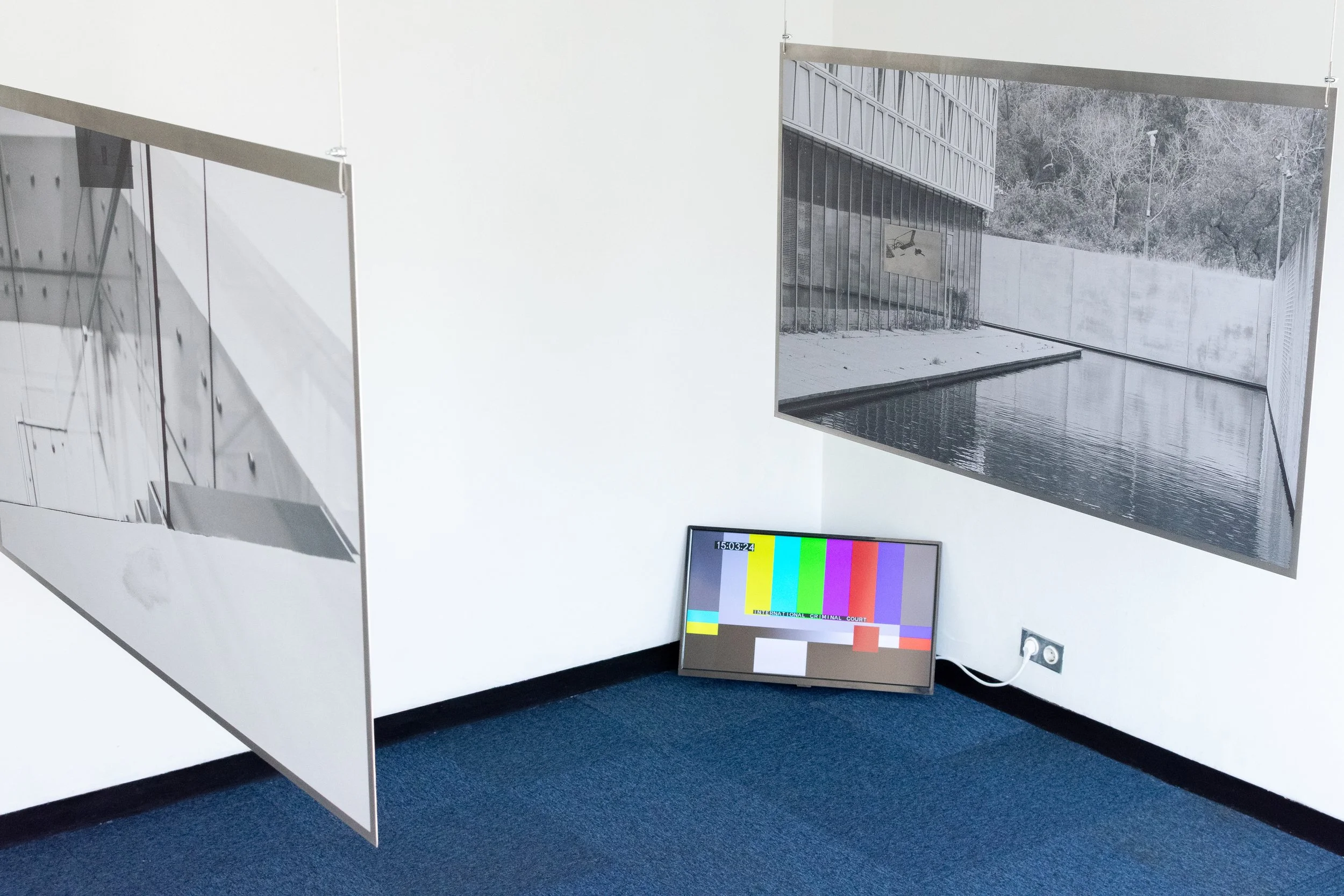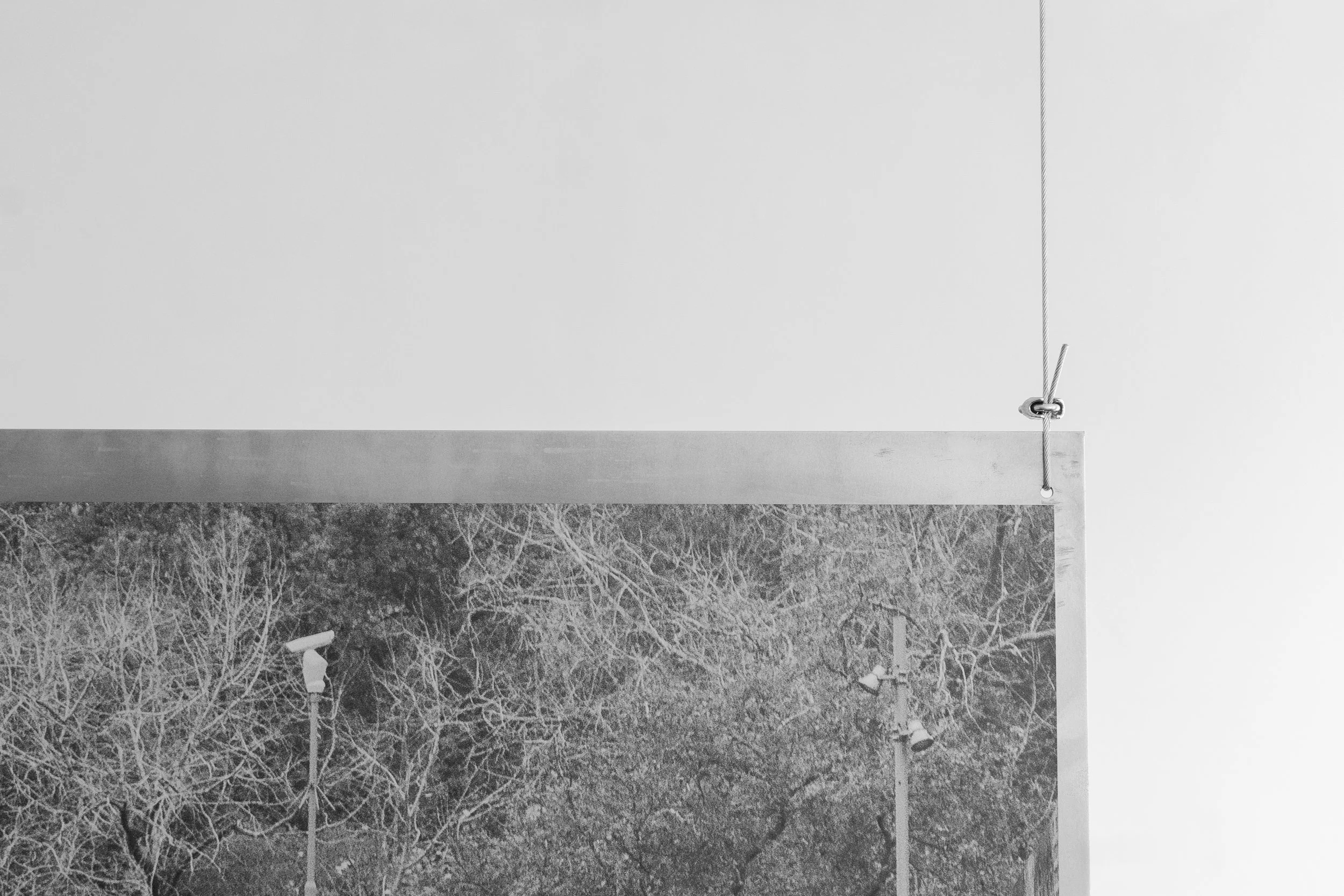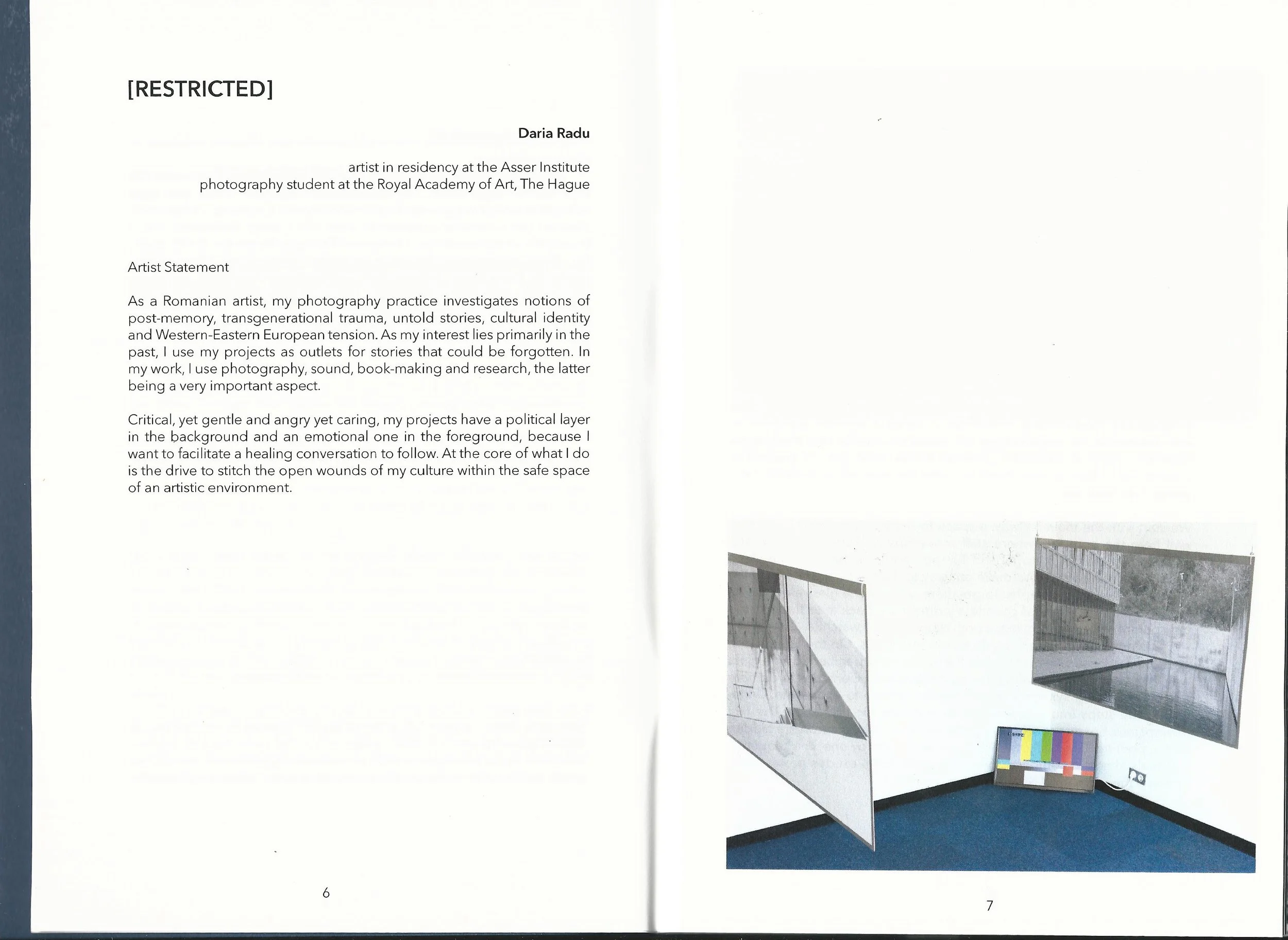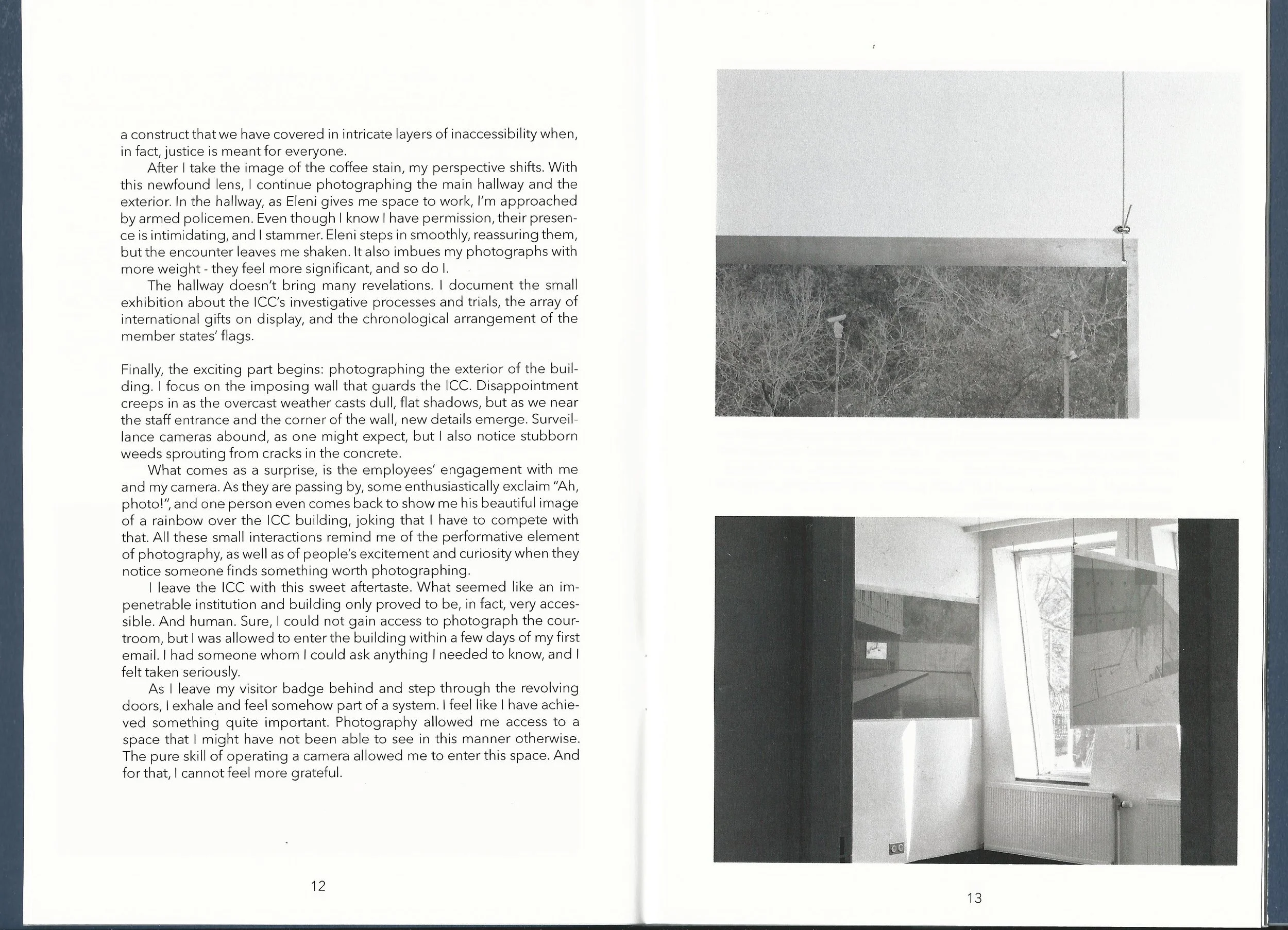[RESTRICTED]- a commissioned work by the T.M.C. Asser Institute
October 2024 - March 2025
In “[RESTRICTED]”, I address the architecture of international legal institutions in The Hague, demystifying these spaces by highlighting their human elements and questioning their accessibility to the public. Granted access to the International Criminal Court (ICC) and the International Court of Justice (ICJ)- the latter not allowing me to use the images in the end- I documented the metaphorical cracks of the seemingly perfect buildings, drawing attention to the mundane and unnoticed. While justice is destined for everyone, international law is a construct covered in intricate layers of inaccessibility, this project concludes.
After what feels like an endless bike ride - 35 minutes, to be exact - I finally arrive at the International Criminal Court (ICC). The towering structure looms ahead, as though preparing to swallow me whole. Lost in this daydream, I approach the revolving door, only to be jolted back to reality by a voice crackling through the intercom.
I announce myself and the person I’m meeting. They’re expecting me. Suddenly, it feels like I’m about to board a plane: I have to present my ID, and both my body and backpack are scanned. My nerves betray me, making me oblivious to the watch on my wrist and the gloves in my pocket, which set off the scanner. I have to go through it again.
Finally, with a visitor’s badge hanging around my neck, I retrieve my now "cleared" backpack and cross the bridge that leads to the court. The building is encircled by water and a wall invisible from the street - a fortress in every sense.
At the information desk, I once again announce my arrival and wait for Eleni. I let my gaze wander around the main hall of the ICC. The desk is flanked by rows of flags, and above it hangs a wooden sculpture, its intricate design catching the light. I’m drawn to a nearby rack offering detailed brochures about the ICC, but just as I reach for one, I’m greeted by a warm voice. Eleni arrives, ready to offer me what will turn out to be a private two-hour tour.
We start with the main hallway, a space for visitors separated by a glass wall from the corridors where staff move briskly. Along the walls, she points out gifts from Portugal and Tunisia - artefacts that lend the place an unexpected warmth.
We make our way to the media room, where I’m allowed to take photographs. To get there, we take the glass elevator. As we ascend, the portraits of countless judges stare back at us through the transparent walls, their presence both dignified and watchful.
The media room itself is split across two levels. On the lower floor, press conferences take place, while the upper level, partitioned by a glass wall, is reserved for journalists during these events. Eleni tries to demonstrate the lighting system, but the switches refuse to cooperate. Undeterred, she steps into a nearby booth and calls for assistance. The first attempt fails, but on the second try, she succeeds - the controls are hidden on the podium.
Gradually, the lights come on, one by one, in a sequence that feels almost ceremonial. Even this small detail exudes professionalism as if the room itself is preparing for its role.
Just as the lights reach their full glow, a colleague of Eleni’s appears. They exchange a few words before her colleague begins meticulously arranging the chairs on the podium, ensuring each one is perfectly aligned. She adjusts the accessories on the audience chairs until everything is symmetrical.
When the room is finally in order, I’m left alone in the glass-walled box, the quiet settling around me as I take my photographs.
I take photographs intending to document, capturing as much as I can. I photograph the chairs, the walls, and the few plants sprouting from bright orange pots. I frame reflections in the windows and the dents left by chairs in the rug. Each image feels like a keepsake, a tangible memory of my visit to this renowned institution of justice.
When I feel I’ve gathered enough material from the lower floor, Eleni leads me upstairs to the level reserved for journalists. I begin my meticulous dance with the camera again, only to discover that my SD card is full. No problem, I think. I’ve come prepared with a backup.
But when I insert the second card, it doesn’t work. Panic begins to creep in. I try resetting it, removing and reinserting it, but nothing helps. Embarrassed, I explain the situation to Eleni, and she kindly accompanies me back to the locker room, where I’m relieved to find my laptop. I transfer the 30 GB of images from the first card to my device, though the process feels like an eternity. As the files load, my thoughts spiral - how could this happen while I was so prepared? I can’t shake the feeling that this is a once-in-a-lifetime opportunity, slipping through my fingers.
After ten agonizing minutes, everything is back in order. Eleni’s patience and understanding keep me grounded, and we return to the media room's upper floor. Grateful, I refocus and dive back into photographing with renewed attention to detail. I capture the instructions for using the computers, the angles of the chairs, and the view of the press conference room from above.
As I finish this second bout of frantic documentation, I’m about to descend the stairs when I remember the coffee stain on the beige carpet that stood out to me from my first encounter with the space. It seemed unimportant, but now I realize that this is the key element of my project.
Of course, someone could spill their coffee in the ICC, too, but as a naïve visitor, seeing this with my own eyes makes me realize how human international justice is. It’s a construct that we have covered in intricate layers of inaccessibility when, in fact, justice is meant for everyone.
After I take the image of the coffee stain, my perspective shifts. With this newfound lens, I continue photographing the main hallway and the exterior. In the hallway, as Eleni gives me space to work, I’m approached by armed policemen who ask what I’m doing. Even though I know I have permission, their presence is intimidating, and I stammer. Eleni steps in smoothly, reassuring them, but the encounter leaves me shaken. It also imbues my photographs with more weight - they feel more significant, and so do I.
The hallway doesn’t bring many revelations. I document the small exhibition about the ICC’s investigative processes and trials, the array of international gifts on display, and the chronological arrangement of the member states’ flags.
Finally, the exciting part begins: photographing the exterior of the building. I focus on the imposing wall that guards the ICC. Disappointment creeps in as the overcast weather casts dull, flat shadows, but as we near the staff entrance and the corner of the wall, new details emerge. Surveillance cameras abound, as one might expect, but I also notice stubborn weeds sprouting from cracks in the concrete.
What comes as a surprise, is the employees’ engagement with me and my camera. As they are passing by, some enthusiastically exclaim “Ah, photo!”, and one person even comes back to show me his beautiful image of a rainbow over the ICC building, joking that I have to compete with that. All these small interactions remind me of the performative element of photography, as well as of people’s excitement and curiosity when they notice someone finds something worth photographing.
I leave the ICC with this sweet aftertaste. What seemed like an impenetrable institution and building only proved to be, in fact, very accessible. And human. Sure, I could not gain access to photograph the courtroom, but I was allowed to enter the building within a few days of my first email. I had someone whom I could ask anything I needed to know, and I felt taken seriously.
As I leave my visitor badge behind and step through the revolving doors, I exhale and feel somehow part of a system. I feel like I have achieved something quite important. Photography allowed me access to a space that I might have not been able to see in this manner otherwise. The pure skill of operating a camera allowed me to enter this space. And for that, I cannot feel more grateful.
This stain demystifies the ICC building. Suddenly, it no longer seems to be a perfect glass building, with neat design and walls embedded with professionalism and formality. It now feels human.





exhibition views from Edges of proximity in west, Den Haag (28.02-16.03.2025)







spreads from our informative catalogue





